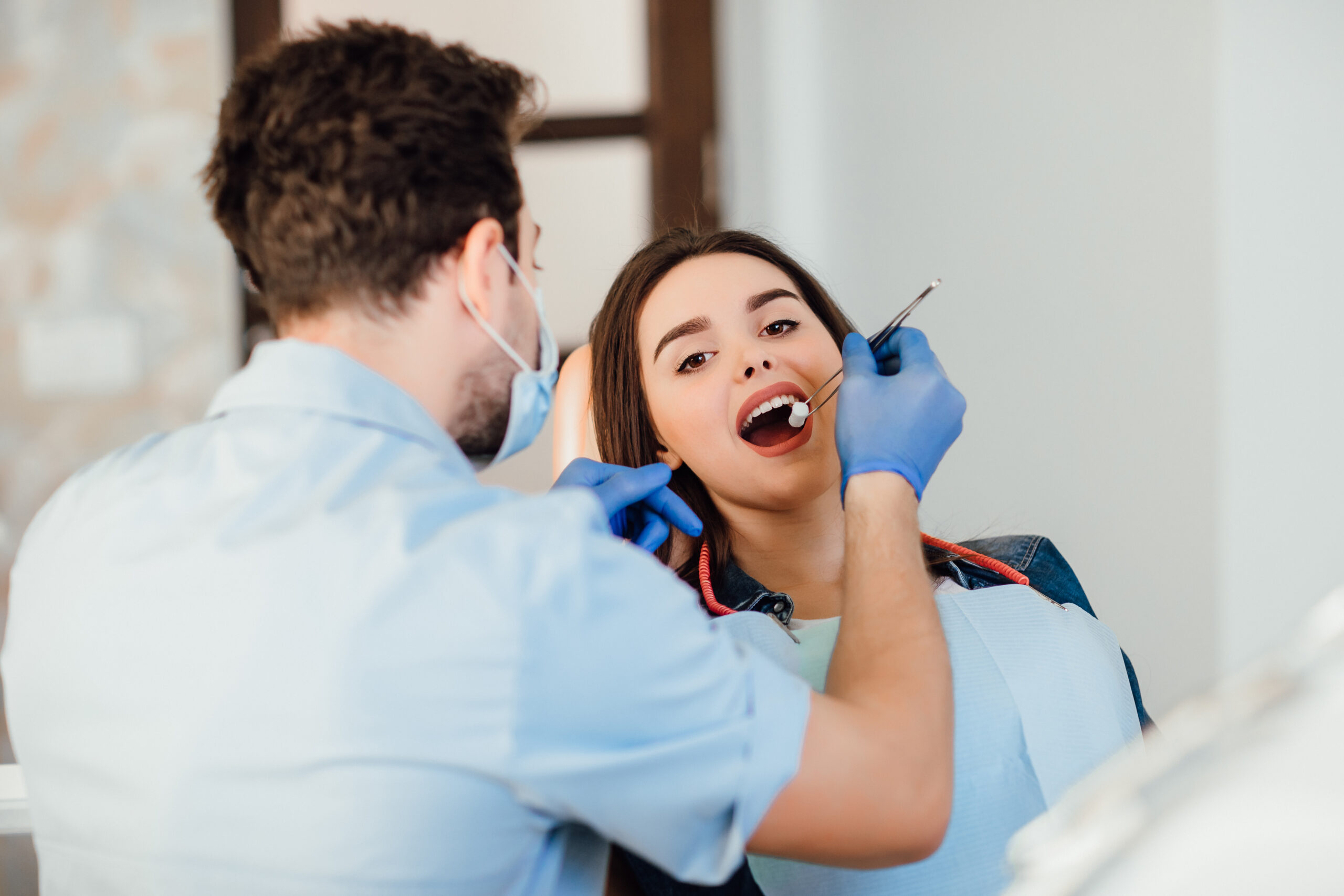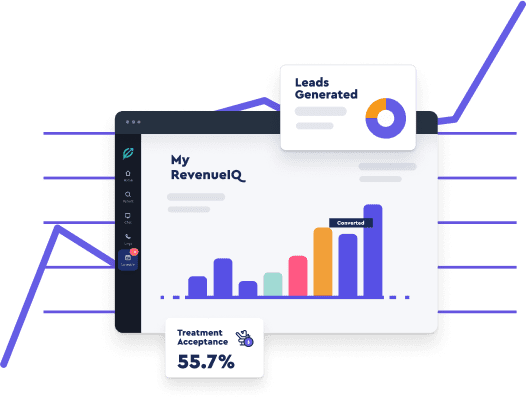Boost Efficiency with Dental Office Manager Daily Checklist

As a dental office manager, you’re the backbone of the practice—from managing schedules and inventory to ensuring top-notch patient care, your role is essential in maintaining efficiency and delivering a seamless experience for both patients and staff. But with so many moving parts, staying organized can feel overwhelming.
That’s where a well-curated daily checklist becomes a game-changer. This comprehensive guide is designed to help you streamline your operations and tackle everything from opening procedures to team management with ease.
Read on to discover how a clear, organized checklist can elevate your practice’s efficiency, reduce stress, and ultimately improve patient satisfaction—making your job as a dental office manager a little less hectic and a lot more rewarding.
How to Achieve Efficiency with the Right Daily Checklist for Dental Office Managers?
Running a dental office smoothly is no easy task, and as a dental office manager, and with so many moving parts, staying organized and on top of everything can be challenging. That’s where a well-structured Dental Office Manager’s Daily Checklist becomes invaluable. See for yourself how many of them you can tick off and how many you plan to incorporate in your short term goals!
Category 1- Office Operations and Administration

The efficient operation of a dental practice relies heavily on meticulous office operations and administration. This part of the Checklist focuses on initiating the day with full preparation and ensuring a seamless workflow throughout the day and deals with everything ranging from basic opening procedures to managing crucial administrative tasks like updating patient records, ensuring financial accuracy, and regulatory compliance for the day.
Opening Procedures and Daily Tasks
Getting your dental office geared up for the day requires several steps:
- Early arrival: Get to the office at least 30 minutes before it opens to prepare for the day.
- Unlocking the office: Remember to turn on appropriate lights and boot up necessary equipment.
- Reviewing the appointment schedule: Look over the appointment schedule for the day, confirm appointments, and contact any patients with changes.
- Staff morning huddle: Conduct a quick meeting to discuss the staff schedule, daily tasks, and any updates or areas of concern. It’s essential for setting the practice’s daily priorities and ensuring everyone is on the same page.
- Checking communications: Routinely check and respond to emails, voicemails, and other messages. This also includes managing incoming and outgoing mail.
Managing Appointments and Patient Scheduling
A significant part of a dental office manager’s responsibility is to oversee the scheduling of patients. This ensures that patients are attended to efficiently, minimizing wait times while maximizing dentist availability. Here’s a typical layout of how a dental office scheduling framework might look like:
| Time Slot | Task for the Dental Office Manager |
|---|---|
| First thing in the morning | Review the appointment schedule for the day |
| Throughout the day | Confirm appointments and contact patients with changes |
| Incase of schedule gaps | Make required adjustments and fill in the gaps |
| Manage walk-in patients | Accommodate emergencies or last-minute changes |
Overseeing Communication: Emails and Phone Calls for Dentist Appointment
Ensuring smooth communication is vital for an effective work environment. As the main point of contact for many, dental office managers need to deal with different kinds of communications – patient queries, appointment requests, vendor discussions, and more. It proves worthwhile in properly filing email communication to quickly retrieve necessary information.
For phone calls, prioritize returning missed calls and coordinate with receptionists to ensure that all necessary callbacks are made. Communicate with patients to clarify doubts, address concerns, or provide any appointment-related information.
Category 2- Inventory and Supplies Management for Dental Office Manager Checklist

Inventory management is a crucial aspect of running a dental office that ensures the smooth functioning of the dental practice. Ensuring the correct stock levels of dental supplies and equipment helps prevent unnecessary delays in patient treatment due to supply shortages. This part of the Checklist covers tracking of current stock, ordering fresh supplies, and keeping track of equipment maintenance.
Tracking and Ordering Dental Supplies
Having a well-stocked inventory is a must for efficient patient care delivery. The dental office manager needs to keep close tabs on consumable items like gloves, masks, syringes, disinfectants, and equipment like handpieces, filling systems, etc.
Create an organized system that helps you track supply usage and reminds you to reorder items when they run low. Negotiate with multiple vendors to get the best prices without compromising on quality. Regular audits to reconcile inventory records with actual stock will mitigate any discrepancies.
Maintaining Equipment and Technology Updates
A part of inventory management also extends to maintaining up-to-date dental equipment. Technology advancement in the dental industry has been fast-paced. Staying abreast with new technology will increase the overall efficiency.
Here are some tasks related to equipment and technology updates:
- Regular inspection and preventive maintenance of equipment to prevent malfunction during patient treatment.
- Update existing equipment with newer technologies to enhance patient care and treatment outcomes.
- Schedule software system updates to avoid working with outdated software and ensure smooth and efficient administrative workflow.
Category 3- Patient Care and Services Coordination

Patient care is at the forefront of a dental office’s objectives. The manager plays a significant role in enhancing patient experience right from reception to departure. This part of the checklist focuses on managerial responsibilities towards coordinating effective patient services, addressing patient queries, collating feedback and ensuring all-around stellar patient experience.
Enhancing Patient Experience from Reception to Departure
Creating a positive first impression is essential in setting the tone for a great patient experience. From the moment patients step into your dental office, they should feel welcomed, well-directed, and comfortable. Streamlining the check-in and check-out processes is key to ensuring smooth workflows and reducing patient wait times, allowing you to focus on providing excellent care rather than administrative delays.
Engaging with patients during their waiting time is equally important. Keeping them informed about any delays or changes to their schedule helps manage expectations and reduce frustration. Offering comfort items—like a television, magazines, or free Wi-Fi—can turn what might otherwise be a stressful wait into a more relaxed experience.
Maintaining clear and timely communication with your patients is another area that should not be overlooked. Whether it’s about their treatment plan, any potential issues, or changes to their appointment, keeping them in the loop shows that you value their time and care. A patient who feels informed and well-cared-for is more likely to return for future visits and recommend your practice to others, making positive patient interactions a key driver of your practice’s growth and success.
Handling Patient Feedback
An effective dental office manager is also an efficient communicator.
- Handling Positive Reviews: Positive feedback from patients is a powerful testament to your practice’s success. Actively acknowledge and celebrate these reviews, either by thanking the patient personally or sharing their feedback with the team. This not only reinforces your commitment to excellent care but also boosts staff morale and encourages a continued high standard of service. When patients feel appreciated, they’re more likely to return and refer others, strengthening your reputation.
- Managing Negative Reviews: Addressing negative feedback with professionalism and empathy is crucial. When a patient raises a concern or expresses dissatisfaction, act quickly to resolve the issue before it escalates. Acknowledge the problem, apologize if necessary, and offer a solution. Collect constructive feedback and use it to identify areas for improvement in your practice. Turning a negative experience into a positive resolution shows your dedication to patient care and can transform dissatisfied patients into loyal ones.
Remember to always treat patients with respect, empathy, and professionalism, turning this interaction into an opportunity to exceed their expectations.
Category 4- Facility Management and Maintenance for Dental Office Manager

Maintaining a clean, hygienic, and welcoming facility is integral to a thriving dental practice. An inviting environment can positively impact a patient’s experience and impression of the dental practice. Consistent facility upkeep and regular maintenance checks help to keep the premises in top shape and avoid any sudden breakdowns or emergencies that can affect office operations.
Daily Facility Inspection and Issue Resolution
Routine inspections can help identify potential issues before they become bigger problems. Here are some key tasks related to daily facility inspection:
- Conduct daily spot checks: Frequently inspect areas like waiting areas, treatment rooms, and restrooms to ensure absolute cleanliness.
- Check equipment functionality: Regularly inspect all dental equipment for any malfunctions or necessary servicing.
- Address issues promptly: Respond quickly to any identified shortcomings. Whether it’s a faulty air conditioning system or a wobbly reception desk chair, ensure timely resolutions to such issues to enhance patient experience and safety.
- Report larger concerns: If there are issues beyond your capability, like electrical or plumbing problems, report these to the dentist or facility owner for immediate attention.
Why Ensuring Cleanliness and Safety Standards is of Utmost Importance?
Maintaining high standards of cleanliness in a dental practice is a must. It’s not just about making the office look good; it’s about creating a safe, hygienic environment for both patients and staff. In the post-COVID era, diligent cleaning practices are even more important in reassuring patients that their safety is a top priority. Here are some key steps to keep your practice spotless and secure:
- Regular Sanitization: Make sure every surface—from the reception desk to treatment chairs—is sanitized throughout the day. This prevents cross-contamination and ensures hygienic conditions during treatments.
- Pleasant, Neutral Scents: The office should always smell fresh, but avoid overpowering fragrances. A clean, neutral environment is more inviting and comfortable for patients.
- Consistent Trash Removal: Regularly empty trash bins to maintain a tidy office and prevent any unpleasant odors. This contributes to a clean and welcoming atmosphere.
- Adhere to Health Regulations: Always follow the latest safety guidelines set by health authorities. This includes using appropriate disinfectants, sterilizing instruments, and ensuring personal protective equipment (PPE) is in place to protect both your team and your patients.
By keeping cleanliness at the forefront, you not only promote a professional image but also create a safe, reassuring environment for everyone who walks through your door.
Category 5- Professional Development and Team Management

To run a smooth operation, an office manager also needs to manage their staff effectively. A dedicated part of the checklist deals with providing suitable training and educational opportunities for the staff, maintaining frequent team meetings to discuss updates, issues, or feedback, etc. By fostering the right environment for professional development, a dental office manager significantly contributes to the efficient functioning and overall success of the dental practice.
How to Ensure Continuous Training and Education for Staff?
Ensuring continuous training and education for your dental staff is essential in keeping up with the ever-evolving dental field. When your team is well-trained and up-to-date, it not only boosts their skills but also improves job satisfaction and overall productivity. Here are a few ways you can make ongoing education a part of your practice:
- Encourage Professional Development: Motivate your team to attend relevant workshops, seminars, or online courses. This helps them stay informed about the latest trends, technologies, and best practices in dentistry.
- Regular In-House Training: Hold regular training sessions at the practice to cover important topics like new equipment, patient communication techniques, safety regulations, or updates on practice management software.
- Mandatory Safety Training: Ensure that all staff members complete any required training on OSHA, HIPAA, and other safety protocols. This not only keeps the practice compliant but ensures a safer environment for both staff and patients.
- Create a Culture of Learning: Foster a nurturing environment where learning and development are valued. When your team feels supported in their professional growth, it reflects in the quality of care they provide to patients.
By consistently investing in your team’s education, you create a skilled, confident workforce that’s equipped to handle the latest challenges while delivering top-notch patient care.
Conducting Regular Team Meetings for Updates and Feedback
Regular team meetings are crucial for any dental practice. They foster better communication among staff members, enabling them to discuss daily operations, challenges faced, share updates, and provide constructive feedback.
Plan short, focused meetings for problem-solving, brainstorming, and sharing of best practices. Touch upon areas like patient reviews, appointment schedules, inventory levels, equipment issues, or individual performance. Make sure to also use this platform to address any management updates or changes in policies.
Team meetings also present a great opportunity to recognize and appreciate individual contributions, leading to enhanced motivation and productivity.
Category 6- Utilizing Technology for Efficient Management

In this digital age, starting from practice management software to patient communication tools, there is a myriad of resources available that can automate mundane tasks, improve efficiency and transform the way office management is viewed. It not only optimizes work efficiency but also improves patient experience, leading to a successful dental practice.
Implementing Dental Practice Management Software Solutions
One of the mainstays of modern dental practices is the implementation of Dental Practice Management software solutions. They help manage and consolidate patient records, appointment scheduling, billing, insurance processing, and much more into an easy, single-point system of operation.
This ensures that you can access patient information, manage appointments or check insurance status at the touch of a button, making processes faster and reducing the likelihood of errors. Keeping electronic records is safer and more organized than traditional filing systems. It can streamline daily tasks, leaving you with more time to focus on your primary responsibility – managing the dental office efficiently.
How to Leverage Digital Tools for Better Workflow?
The digital wave has brought about several tools that can assist in enhancing productivity in your dental office. Here are some areas you could consider digitalizing:
| Workflow Process | Digital Tools |
|---|---|
| Appointment Scheduling | Online scheduling platforms |
| Patient Records | Electronic dental record software |
| Communication | Email automation software |
| Billing and Payment | Automated billing and payment software |
| Inventory Management | Inventory control software |
By leveraging such tools, you ensure streamlined workflow, which ultimately leads to efficient management.
Maximizing Efficiency with a Structured Checklist is Now Just A Click Away!

As a Dental Office Manager, you’re tasked with managing everything from patient appointments to team coordination. Juggling these responsibilities can feel overwhelming, but with an organized Dental Office Manager’s Daily Checklist, your day can run more smoothly and efficiently.
With Practice by Numbers, you can further optimize your workflow with features designed to make your day-to-day operations easier:
- Practice Analytics & KPIs: Track over 600 key performance indicators (KPIs) to ensure your practice is running at peak efficiency. Having data on hand allows you to make informed decisions, helping you manage appointments, treatments, and patient satisfaction with confidence.
- Team Management & Accountability: Use the platform’s built-in features to assign tasks, monitor team performance, and keep everyone aligned on the day’s priorities. This ensures that every team member is on the same page, boosting overall productivity.
- Automated Patient Communication: Save time and enhance patient satisfaction with automated reminders, appointment confirmations, and follow-up communications. This ensures your patients never miss an appointment and are kept in the loop, reducing no-shows and cancellations.
- Financial & Billing Management: Keep track of billing, insurance claims, and payment processing all in one place. The platform’s financial tools simplify administrative work, allowing you to focus more on patient care and less on paperwork.
- Customization: Every dental practice is unique, and Practice by Numbers allows you to customize your workflow and reporting tools to fit your specific needs, ensuring you’re always in control of your operations.
Ready to streamline your dental practice? Click here to get started with a personalized checklist and all the tools you need to optimize your operations today!
Frequently Asked Questions
What should a dental office manager prioritize daily?
An efficient Dental Office Manager should prioritize tasks that directly impact patient satisfaction and smooth operation of the practice. This includes checking appointment schedules, overseeing communication, ensuring high standards of safety and cleanliness, managing inventory, and reviewing financial transactions.
What are key technological tools for daily management?
Key technology tools for daily office management include Dental Practice Management Software for consolidated record management, online scheduling platforms for appointment bookings, email automation software for effective communication, automated billing software for efficient financial management, and inventory control software for optimized supply management.
How does the checklist enhance patient care?
The checklist systematizes tasks, leading to an optimally functioning office, efficient staff management, and minimal operational errors. This results in smoother patient experience, timely appointments, quick resolution of queries, clean facilities, and a professional approach – all of which significantly enhance patient care.




